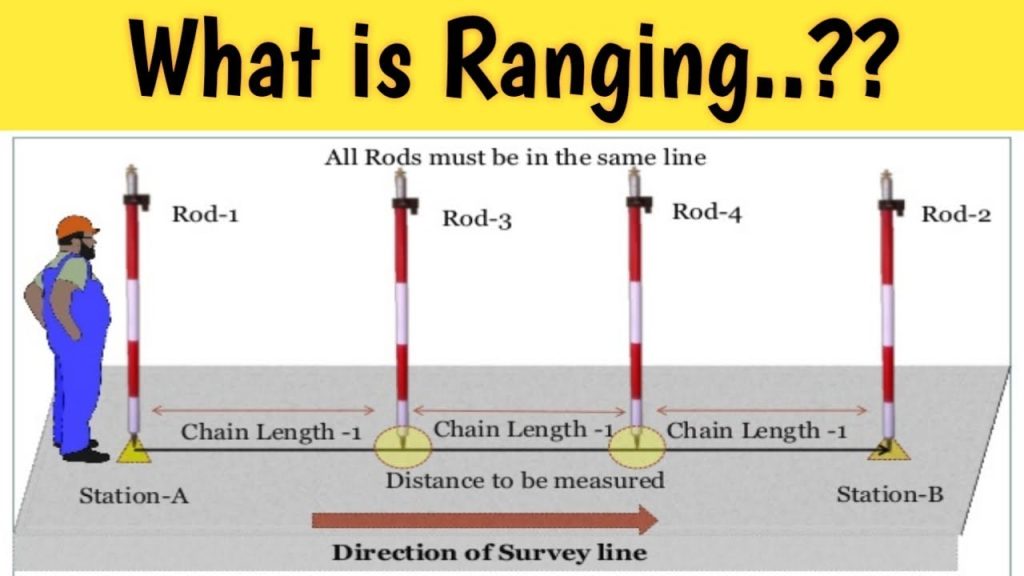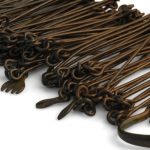When a survey line is longer than a chain length, it is necessary to align intermediate points on chain line so that the measurements are along the line. The process of locating intermediate points on survey line is known as ranging. There are two methods of ranging viz., direct ranging and reciprocal ranging.
Direct Ranging
If the first and last points are intervisible this method is possible. the intervisible stations A and B in which an intermediate point C is to be located. Point C is selected at a distance slightly less than a chain length. At points A and B ranging rods are fixed. The assistant holds another ranging rod near C. Surveyor positions himself approximately 2 m behind station A and looking along line AB directs the assistant to move at right angles to the line AB till he aligns the ranging rod along AB. Then surveyor instructs the assistant to mark that point and stretch the chain along AC.
Indirect or Reciprocal Levelling
Due to intervening ground, if the ranging rod at B is not visible from station A, reciprocal ranging may be resorted. It needs two assistants one at point M and
another at point N, where from those points both station A and station B are visible. It needs one surveyor at A and another at B. To start with M and N are approximately selected, say M1 and N1. Then surveyor near end Arranges person near M to position M2 such that AM2N1 are in a line. Then surveyor at B directs person at N, to move to N2 such that BN2M2 are in a line. The process is repeated till AMNB are in a line.
OBSTACLES IN CHAINING
Though it is desirable to select stations so as to avoid obstacles, occasionally the obstacles are unavoidable.
Various obstacles to chaining may be grouped into:
(i) Obstacles to ranging (chaining free-vision obstructed)
(ii) Obstacles to chaining (chaining obstructed-vision free)
(iii) Obstacles to both ranging and chaining.
Various methods of overcoming these obstacles are explained is this article.
Obstacles to Ranging These obstacles can be further classified into the following categories:
(a) Both ends of the line are visible from some intermediate points. Intervening ground is an example of such obstacle. By resorting to reciprocal ranging this difficulty can be overcome.
(b) Both ends of the line may not be visible from intermediate points on the line, but may be visible from a point slightly away from the line. Intervening trees and bushes are the examples of such obstacles. This obstacle to chaining may be overcome by measuring along a random line as shown In this case required length EB = √(EC2 + CB2)
Obstacles to Chaining
In this type the ends of lines are visible but chaining is obstructed. Examples of such obstructions are ponds, lakes, marshy land etc.



Comments are closed